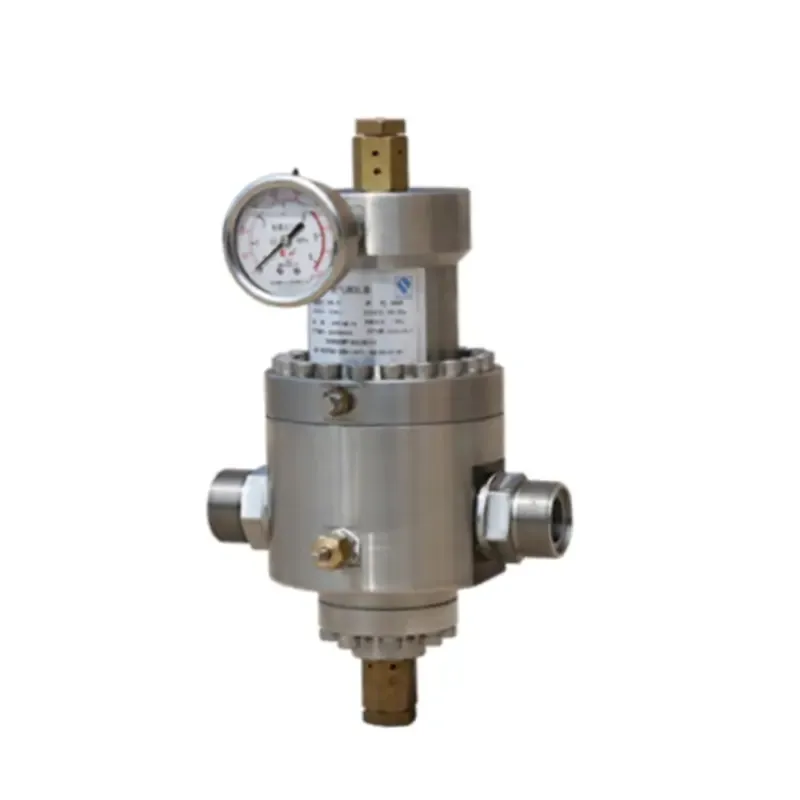
Dec . 28, 2024 20:26
Back to list
Design and Implementation of Pressure Reduction Skid for Efficient System Operation
Understanding Pressure Reduction Skids Key Components and Applications
In today’s industrial landscape, managing pressure efficiently is critical across various operations, particularly in oil and gas, petrochemical, and water treatment sectors. Among the devices employed to control and optimize pressure within systems is the pressure reduction skid. This article aims to provide an overview of pressure reduction skids, their key components, design considerations, and applications.
What is a Pressure Reduction Skid?
A pressure reduction skid is a packaged assembly designed to reduce the pressure of fluids to safe, operational levels before they are sent to downstream processes or equipment. These skids combine various components, such as pressure regulators, flow meters, safety valves, and operational control systems, all mounted on a structural platform. The major advantage of utilizing a pressure reduction skid lies in its pre-engineered design, which allows for rapid installation and ease of transportation.
Key Components of Pressure Reduction Skids
1. Pressure Regulators These are crucial for maintaining the desired outlet pressure. They adjust the flow of fluid in response to changes in upstream pressure and the downstream demands, ensuring consistent pressure regulation.
2. Flow Meters Monitoring the flow of fluids is essential for overall system efficiency. Flow meters provide real-time data on fluid movement, enabling operators to make informed decisions regarding operational parameters.
3. Safety Valves Ensuring safety in high-pressure environments is non-negotiable. Safety valves protect equipment and personnel by relieving excess pressure that could lead to catastrophic failures.
4. Control Systems Modern pressure reduction skids incorporate automated control systems that facilitate monitoring and controlling pressure and flow rates, enhancing operational efficiency and reliability.
5. Structural Framework The skid itself is typically constructed from durable materials such as carbon steel or stainless steel, designed to withstand harsh environments while providing structural integrity and support for all components.
Design Considerations
When designing a pressure reduction skid, several factors must be taken into account
pressure reduction skid

- Fluid Properties Understanding the type of fluid being handled (gas or liquid) and its characteristics (such as viscosity, temperature, and corrosiveness) is essential for selecting appropriate components.
- Pressure and Flow Requirements Careful calculation of the required outlet pressure and flow rate is crucial to ensure the skid meets operational needs efficiently.
- Material Selection Depending on the fluid's chemical properties, appropriate materials must be selected to prevent corrosion, minimize wear, and prolong the lifespan of the skid.
- Safety Standards Compliance with local and international safety standards is critical. This includes pressure ratings, certifications, and adherence to best practices in design and construction.
Applications of Pressure Reduction Skids
Pressure reduction skids have diverse applications across different industries, including
1. Oil and Gas In the extraction and refining processes, these skids regulate pressure in pipelines and storage tanks, ensuring safe handling of hydrocarbons.
2. Water Treatment Pressure reduction skids are commonly used in water treatment plants to maintain pressure levels for various processes such as filtration and disinfection.
3. Chemical Processing Skids assist in managing the pressures of various chemical reactions, enhancing safety and efficiency in the production process.
4. HVAC Systems In heating, ventilation, and air conditioning systems, pressure reduction skids help maintain optimal pressure levels for fluid circulation.
Conclusion
Pressure reduction skids play a vital role in ensuring safety and efficiency in fluid handling across many applications. Their pre-engineered design, coupled with essential components like pressure regulators and safety valves, makes them indispensable in modern industrial operations. By understanding their structure, functionality, and applications, organizations can better leverage these systems to enhance operational performance and safety measures in their processes. As technology advances and industries evolve, pressure reduction skids will continue to be integral to fluid management solutions, providing reliability and peace of mind in high-pressure environments.
Latest news
-
Safety Valve Spring-Loaded Design Overpressure ProtectionNewsJul.25,2025
-
Precision Voltage Regulator AC5 Accuracy Grade PerformanceNewsJul.25,2025
-
Natural Gas Pressure Regulating Skid Industrial Pipeline ApplicationsNewsJul.25,2025
-
Natural Gas Filter Stainless Steel Mesh Element DesignNewsJul.25,2025
-
Gas Pressure Regulator Valve Direct-Acting Spring-Loaded DesignNewsJul.25,2025
-
Decompression Equipment Multi-Stage Heat Exchange System DesignNewsJul.25,2025

